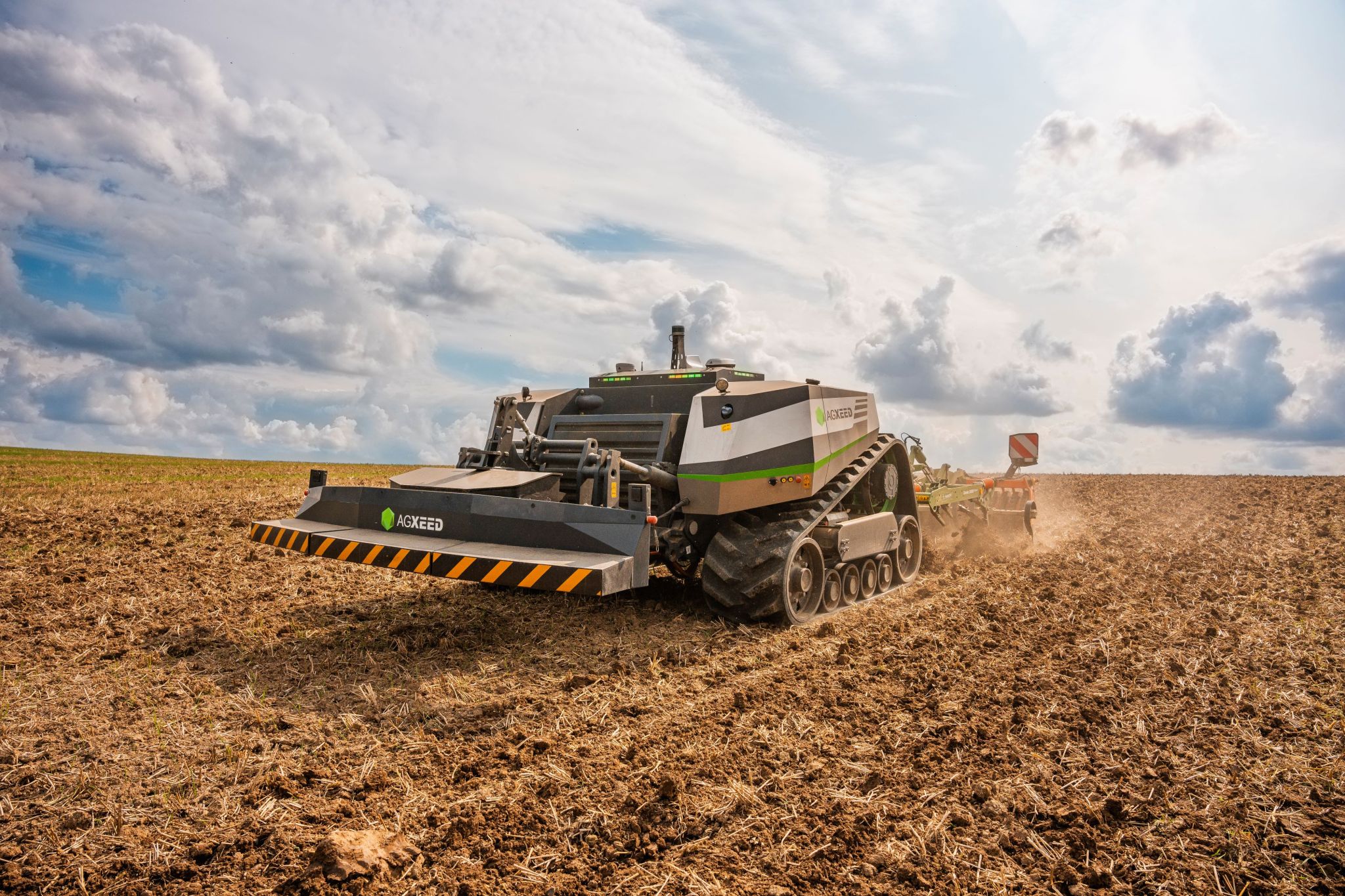From concept to commercial reality: how AgXeed and Nobleo are revolutionising autonomous farming
5 min read
5 min read - 12 Nov 2025
In 2020 autonomous farming was still in its early stages, with prototypes being developed and tested in controlled environments. Fast forward to 2025, and the agricultural landscape has changed dramatically. What was once considered futuristic technology is now working in fields across the globe. At the forefront of this transformation is AgXeed, a Dutch scale-up launched in 2018 by four founders from the tractor manufacturing industry, partnered with Nobleo Technology that provides the on-board autonomous software intelligence behind the self-driving agricultural robots
The partnership that changed everything
When AgXeed’s founders wanted to revolutionise agriculture through autonomy, they knew hardware expertise alone wouldn’t be enough. “We needed a partner that could help us autonomise our machines,” Lars Schmitz, AgXeed’s CTO, explains. “After speaking with several parties, Nobleo’s pragmatic approach and robotics expertise stood out.”
The match proved ideal. AgXeed brought deep agricultural knowledge and mechanical engineering prowess; Nobleo contributed cutting-edge autonomous software capabilities honed across multiple robotics sectors. “The collaboration with AgXeed was really strong,” recalls Ferry Schoenmakers, Mechatronics Engineer at Nobleo. “They came well-prepared with clear technical requirements from day one. The shared technical expertise on both sides made communication smooth and accelerated development tremendously.”
Starting from scratch
The partnership began in spring 2019 with architectural design. Rather than adapting existing tractors, they started fresh, designing purpose-built autonomous machines without cabins, steering wheels, or driver seats. This freedom enabled radical innovation.
“The trend in agriculture over 30-40 years shows that machines are getting bigger and heavier to compensate for a decrease in available labour,” Lars explains. “But those heavy machines cause soil compaction, which leads to substantial reduction in crop yields. With autonomous machines, you can build lightweight equipment that can work extended hours – up to 20 hours a day – far beyond what’s feasible with traditional manned operation.”
This innovative mindset was significantly strengthened by Nobleo’s cross-sector experience. Operating across multiple industries beyond agriculture, Nobleo brought fresh technological perspectives that challenged conventional farming practices. “Working in a specific sector always carries the risk of tunnel vision,” Lars observes. “What made our collaboration so valuable was Nobleo’s ability to apply cutting-edge robotics solutions from other domains to agricultural challenges. Traditional agricultural development tends to be conservative, but modern technologies open up entirely new possibilities.” By end 2019, just eight months after starting, the first prototype was operational.
From prototype to global product
The journey to turn that first prototype into a commercial product demanded intensive problem-solving. The teams tackled drive system challenges, precise localisation needs, and the complex challenge of perception in open agricultural environments.
Nobleo’s previous robotics projects took mainly place indoors with easily detectable objects like doors, tables, and walls. Open agricultural fields however, presented entirely different challenges. “We had to pioneer new perception solutions, enabling the machine to distinguish between crops, people and obstacles in open fields,” Ferry explains. “To achieve this, we experimented extensively with LiDAR and radar sensors and with ultrasonic technology, ensuring the machine can reliably detect and interpret its surroundings.”
By July 2022, AgXeed delivered its first commercial machines. Today, over 100 autonomous robots operate worldwide across three variants: a tracked model for heavy-duty operations like ploughing and cultivating, a four-wheeled version for lighter tasks such as seeding and weeding, and a three-wheeled model especially designed for orchards.

The digital advantage
What truly differentiates AgXeed’s agricultural robots is their digital architecture. “The way the machine is digitalised, how components communicate, and how we log and access data, that’s truly unique in this market,” Lars emphasises. This architecture enables remote diagnostics. “We can log into machines remotely and see exactly what’s happening. With traditional tractors, if something breaks, you hope the fault occurs when the mechanic is on site. We’ve eliminated that problem by remotely logging extensive data. Once downloaded, we can analyse those data and quickly see what is wrong, or why the robot made a certain decision.”
Open-source innovation
A critical but largely invisible aspect of the partnership’s success is the software foundation. Nobleo makes extensive use of ROS (Robot Operating System), an open-source modular software platform that accelerates robotics development through reusable components. “ROS has undergone a major update,” Ferry says. “And we migrated all AgXeed’s software to the new ROS 2 framework to ensure future readiness.”
ROS 2 brings major advantages, enabling real-time, secure, and scalable communication between distributed systems, crucial for autonomous machines working together in dynamic environments. This upgrade paves the way for truly autonomous farming systems where multiple robots collaborate seamlessly. “Imagine a combine harvester autonomously harvesting while two or three driverless tractors with trailers take turns collecting the harvest, communicating in real time to coordinate routes, loading status, and unloading points,” Ferry envisions.
Transforming an industry
Five years after starting with a blank sheet of paper, AgXeed and Nobleo have proven autonomous farming is not just viable but commercially successful. Their approach, combining agricultural expertise with advanced robotics, open-source innovation, and pragmatic engineering, is reshaping how the world thinks about farming technology.
As autonomous systems become more sophisticated and collaborative, the partnership demonstrates that agricultural transformation requires both deep domain knowledge and cross-industry innovation. The future they’re building is one where intelligent machines handle repetitive tasks while farmers focus on strategic decisions, increasing efficiency, reducing environmental impact, and addressing labour challenges facing modern agriculture.

